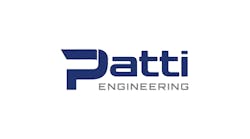| O |
"As a revolution it's not here yet, but as an idea it's everywhere."
“Smart dust,” or ultra-small, ultra-low power consumption sensors, which can be deployed quickly and at low cost to assess crop conditions, while alarming for chemical warfare agents, and monitor sensitive border crossings is still far in the future. However, contemporary wireless sensor packages, incorporating mesh networking to reduce operating power requirements, could be broadly available within a few years. One source indicated that the cost of the radio transceiver, implemented in silicon, incorporating data-handling standards and sensor interface components would likely cost in the $50$75 range. Far too high a price for smart dust but conceivable for many industrial automation and building control applications. Shedding the cost of wiring and the flexibility to reconfigure the application while adding sensor points as necessary should be a real value.
One enabling technology for industrial wireless is the ZigBee protocol (The ZigBee Alliance www.zigbee.org). ZigBee, based on IEEE 802.15.4, is a low-power, low-data-rate wireless networking standard targeted at remote monitoring and control uses. IEEE 802.15.4 specifies the physical and media access control layers while Zigbee specifies the network, security and application layers. The ZigBee Alliance has roughly 100 corporate members including well-known control OEMs and integrators as well as a number of prominent component manufacturers.Other standard wireless protocols, particularly Bluetooth and WiFi, have advantages in terms of data rate but they are optimized for voice and graphics transmission.With its low power usage and large number of available nodes, ZigBee is optimized for most industrial monitoring and control situations.On-stream analyzers could be an important test for industrial wireless technology in general including the ZigBee protocol. There is a wireless option in the plan for NeSSI (Sample Handling Initiative). NeSSI GENERATION III offers both wired and wireless Ethernet for communication with the DCS. Field trials could begin as early as next year.Bob Sherman, Editor of ISA’s Practical Guide Series volumes on process analyzers and widely featured lecturer on analyzer topics, comments: “Heck, even intrinsic safety is a dangerous innovation to a lot of analyzer specialists, let alone wireless and ZigBee.”The up-coming IFPAC/2005 meeting (www.ifpac05.org) in Washington, DC (January 1013, 2005) is an obvious way to stay current on process analyzer application technology as well as glimpse the future. Co-chairs Ali M. Afnan (FDA CDER) and Jerry M. Clemons (ABB Process Analytics) have developed a technical program that should challenge the most demanding observer (Yes Peter, I’m thinking of you).Terrence K. McMahon, McMahon Technology Associates: Tel: 201-585-2050; Fax: 201-585-1968; [email protected]



